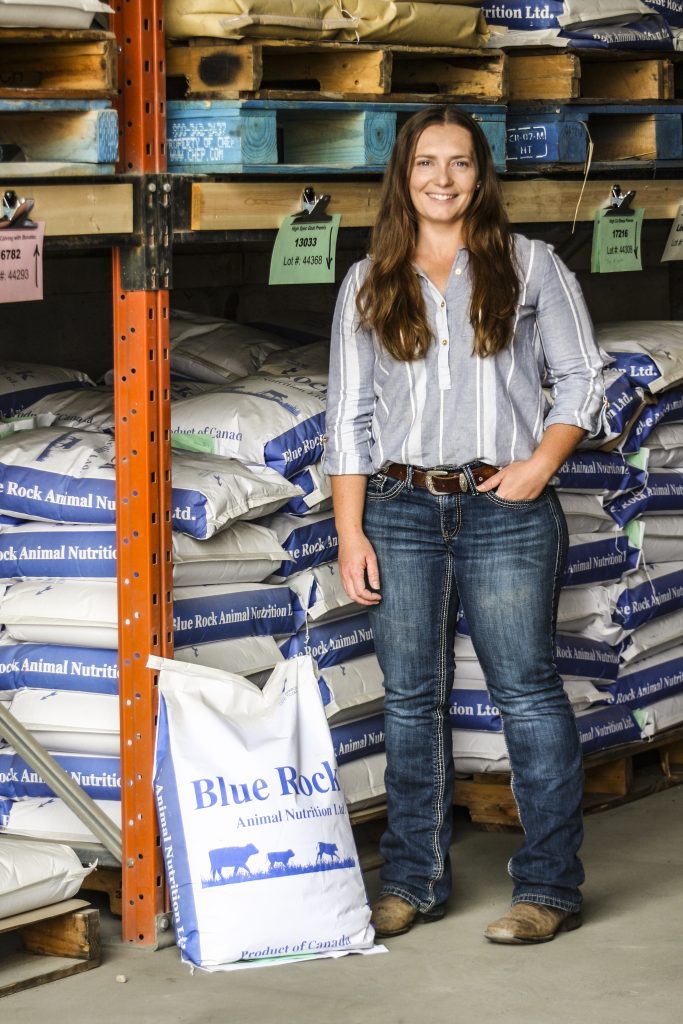AB Direct - Steers
Rail: 495.00 del
AB Direct - Heifers
Rail: 495.00 del
US Trade- Steers
Rail: 355.00-363.00 (IA, NE)
US Trade - Heifers
Rail: 355.00-363.00 (IA, NE)
Canadian Dollar
0.05
Fall Nutrition: Not a one-tub-fits-all solution
Ensuring a transition of optimal health and feed efficiency
Alberta provides some of the best rangeland in the world – rolling native grasslands, wide-open spaces, and water – all crucial to raising healthy, profitable, world-class, Alberta beef. As cattle come back from summer pastures and into their fall and winter-feeding routines however, it is important to remember the individual needs and environment of the cattle herd.
“It is not a one-mineral-fits-all solution,” cautions Abby-Ann Redman, Ruminant Nutritionist, Blue Rock Animal Nutrition, Innisfail, Alberta. “After the stressful drought-stricken summer that many producers across Alberta faced this year, nutrition and quality should be top of mind when transitioning the herd onto dry or stored feed. Not only can the right program save you money, but it can also help maximize feed that may be in short supply and ultimately support a higher per head profit.”

Nutrition takes into consideration several factors, including body condition, stage of production, and production goals. These are important when building a ration, particularly when feed is in short supply so the requirements of the animal are being met while limiting the quantity being fed.
“Alberta is a province of extremes, and the quality of your forage can vary from field to field. The top recommendation that we make to producers is to test their forage, but not to forget the water source too,” says Redman.
Redman says that testing water sources is commonly overlooked by producers and signs like untouched mineral can be an indication of change.
“If you notice your free-choice mineral is going untouched, test your water, especially in a drought year as dry conditions can cause an increase in water salinity and therefore a decrease in mineral consumption.”
“As well, in the summer when cattle are out on pasture, low water levels in dugouts can be dangerous as the concentration of total dissolved solids increases. If sulphate levels become elevated, there is a greater chance of seeing polio and secondary copper deficiencies.”
Considerations coming off drought pastures
Abby-Ann Redman recommends the following best practices for feed management and nutrition for beef producers facing drought conditions this year.
Feeding supplements to maximize feed efficiency
Whether you are preparing for weaning, heading to the feedlot, or prepping for fall sales, taking a moment to think back to your fields over the past summer months followed by diligence when it comes to testing will go a long way to ensuring the health of your herd and ultimately your bottom line. When it comes to ideal forage for cattle, the sweet spot when testing is around the 55% energy, and 7% protein mark. Anything less requires supplementation.

Most importantly, select your feed program with your end goal in mind. For many this year it will be ensuring nutritional requirements are met, while making the most of what feed is available. Your feed determines mineral formulations. That is why this year especially it will be crucial to test harvested forages for nutrient content and nitrate risk, as forage cut under drought conditions might contain high levels of nitrates or prussic acid.
Feed for stages of growth and condition
Of course, feeding for stage of growth remains especially important, taking into consideration the different categories, as replacement heifers require different nutritional needs than mature cows, as do cattle coming in off pasture in varying body score condition. Having a strategy in the stackyard helps too – ensuring that you are feeding your lower quality hay first and then as winter progresses and further along in gestation, saving and selecting higher quality feed is important, as they need more nutritional support.
“There are two key factors to remember when grouping your cattle – first and foremost body score condition, and second, feed according to their stage of growth.”
When the grass is starting to brown off, that is when a full mineral package is required rather than a trace mineral salt. What is common in drought situations is that the grass browns off early and the calcium and phosphorus contents are just not at the same levels that you would find in years of adequate moisture and green grass. This is extremely important to consider for supporting reproduction and conception for those bred cows and heifers.
At the end of the day, developing the right nutrition program is a science and there are a lot of factors that go into its development. It is no longer a one-mineral-fits-all solution for producers, taking into consideration environmental factors, growth stages and purpose. A custom nutrition program is just another tool to help producers reduce costs, improve winter endurance, improve profitability, or make it through the adversity of drought.
Blue Rock Animal Nutrition was established in spring 2013 by Lee Eddy and Kristen Ritson-Bennett, both ruminant nutritionists. Kristen and Lee purchased the Innisfail Minerals plant (formerly the Old Hereford Test Center) where significant changes were made to the manufacturing facility to increase efficiency and manufacture a top-quality product that is required for the industry. The team at Blue Rock works with producers to test their feed and create customized nutrition and mineral supplementation programs.
This article was first published in the September 2021 edition of ABP Magazine. Watch for more digital content from the magazine on ABP Daily.

